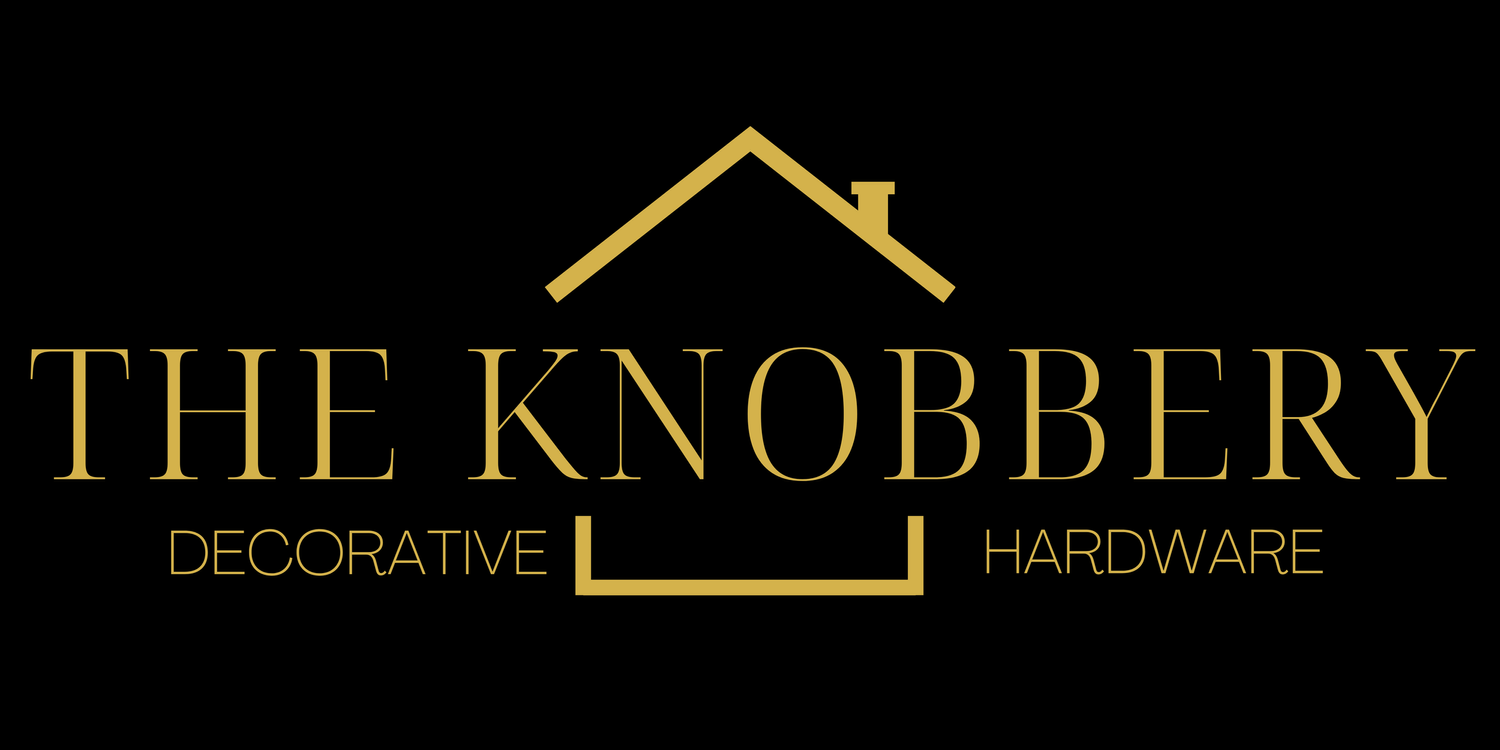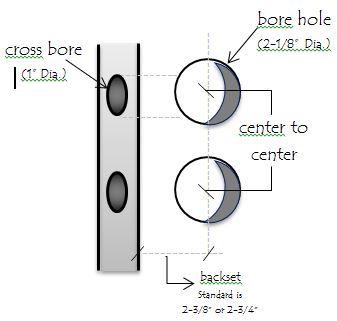Door Hardware Buying Guide
Buying door hardware can be an intimidating task. There are many technical terms and measurements needed that we might not be familiar with. The following is a guide to define terms and a worksheet to use when making your purchase to ensure that you hardware installs and functions properly.
Door Function
The first step in purchasing door hardware is deciding what purpose the door serves and what type of hardware is needed.
For Exterior Use
Handle Set: Typically used for an entry door, named for the long grip handle on the exterior. Handle sets are available in active or dummy functions. Dummy function is stationary hardware used on the inactive door in a pair. Active Handle sets are available with two different lock types describe below.
- Mortise: All-in-one locks that are encased in a rectangular metal box for extra security and durability. Mortise locks can only be installed in solid wood or wood core doors, because the box has to be well supported.
- Tubular: The dead bolt and lower latch are independent and tube shaped. This style can be installed in almost any door type.
Keyed Entry Set: Otherwise referred to as key in knob or lever. This design is just as it sounds, there is a key-operated lock incorporated into the knob or lever and latch mechanism. This style is often used for auxiliary entry doors (garage, etc.)
Dead bolt: Used to securely lock the door with a thick throw bolt that is inserted into the jamb. A dead bolt is included in both mortise and tubular handle sets. Most commonly used in combination with a knob or lever set.
Dead bolts are available in single cylinder and double cylinder versions. The cylinder is the keyed side of a dead bolt. For single you have a key on the exterior and a turn piece on the interior. For double you have a key on both sides. Double cylinder is most commonly used on doors with glass or side lights however they are restricted by fire code in some jurisdictions because you require a key to unlock from both sides.
Single Cylinder
Double Cylinder
Keyless Entry: These locks do not require a key to enter, but you can use one if you wish. They are completely programmable and are available as handle sets, dead bolts and keyed lever sets.
****Other exterior options are available but these are the most common
For Interior Use
Passage: This is a knob or lever set that has a latch and turns but has no locking feature. They are often used in hall ways or on closets, pretty much anywhere the privacy is not needed. They are sometimes used on exterior doors in conjuction with a separate dead bolt.
Privacy: This function offers a privacy lock on the knob or lever set. Depending on the manufacturer the lock can be operated with a push button or turn lock and have an emergency release on the exterior just in case. Most commonly used for bedrooms and bathrooms.
Dummy Hardware: These are knobs or levers that do not turn and do not have a latch of any kind. They are often surface mounted but some can be adapted to mount in a pre-bored door. Most common uses are for the inactive door in a pair or for bi-fold closets. These are most commonly sold in pairs that can be mounted separately to the surface of the door but some are a full dummy that mount through the door.
Required Measurements & Door Specifications
Now that you know what kind of hardware you are shopping for you will need to take some measurements and aquire some information about your door to ensure that your new hardware fits and works properly. Some of the required specifications are the backset, the bore hole size (if any), the door thickness and, if multiple holes, the center to center of each hole.
What is the backset?
This is the measurement from the center of the bore hole to the edge of the door. See diagram to the left for clarification. Some door hardware comes with an adjustable backset, but most does not and will need to be specified. Standard residential doors will usually have a 2-3/8” or 2-3/4” backset. Mortise locks often have a 2-1/2” backset. If your door is not pre-drilled or you are not replacing existing hardware you may need to determine the proper backset based on the stile width of your door so that the hardware you select fits properly.
For a door that has been pre-bored the standard bore hole size is 2-1/8” diameter, however some collections have hidden mounting hardware and require a much smaller bore hole size ,so if you are replacing existing hardware you may need to modify the door depending on what you select.
What is door thickness?
Door thickness is another factor that can affect how your door hardware fits during installation. All manufacturers make hardware to fit multiple thicknesses. Residential interior doors are usually 1-3/8” thick, while most residential exterior doors are 1-3/4” thick. If your door is neither of these measurements there may be adapters or extension kits that can be ordered to accommodate.
What is the handing of your door?
This refers to how the door is hung and the direction that it swings. Handing is required for many entry sets and any set that uses a lever style handle. The handing is determined when standing outside the given space and is indicated by which side (left or right) the hinges are on and whether the door swings inward or outward. To the right is a diagram that illustrates how to determine proper handing.
What material is your door constructed from?
Many door hardware vendors assume that doors are made of wood. If your door is constructed of another material (i.e. Steel or fiberglass) you may not be able to use all types of door hardware. (i.e. mortise locks can only be installed in solid wood or wood core doors.) For many collections you may just require different fasteners to insure proper and secure installation.
Latches, strikes, hinges & other info
Standard door latches are available in three styles, drive-in, radius corner and square corner. If your latch is much larger than the ones shown below you may have a mortise lock.
Square Corner Latch
Radius Corner Latch
Drive-In Latch
In the same fashion that latches come in different shapes and styles so do the strike plate. The standard strike for most door hardware vendors is the square corner full lip strike. However your existing hardware or new door could be bored for any of the following, radius corner full lip strike, t-strike or full round strike. Most door hardware vendors offer the various strike designs but they have to be specified at time of order to avoid additional cost.
****Additional items you may need: Hinges, door stops, flush or surface bolts, pocket door hardware, ball or roller catches, address numbers or plaques and kick plates. Please let us know if any of these apply to your project.









